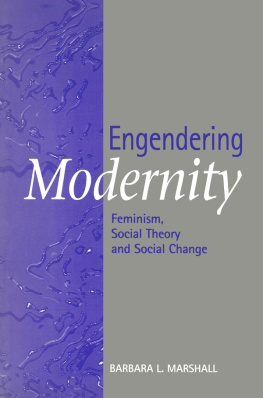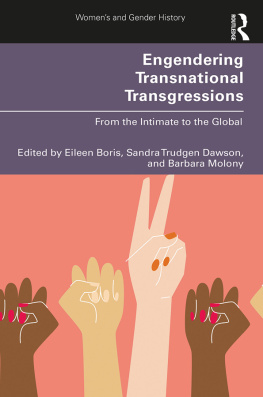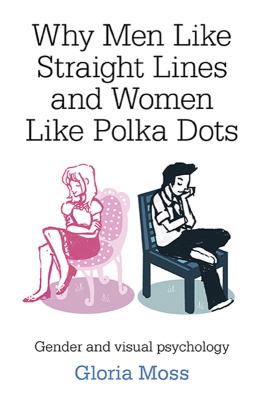ENGENDERING PSYCHOLOGY
WOMEN AND GENDER REVISITED
SECOND EDITION
FLORENCE L. DENMARK
Pace University
VITA CARULLI RABINOWITZ
Hunter College of the City University of New York
JERI A. SECHZER
Pace University
First published 2005, 2000 by Pearson Education, Inc.
Published 2016 by Routledge
2 Park Square, Milton Park, Abingdon, Oxon OX14 4RN
711 Third Avenue, New York, NY 10017, USA
Routledge is an imprint of the Taylor & Francis Group, an informa business
Copyright 2005, 2000 Taylor & Francis. All rights reserved.
All rights reserved. No part of this book may be reprinted or reproduced or utilised in any form or by any electronic, mechanical, or other means, now known or hereafter invented, including photocopying and recording, or in any information storage or retrieval system, without permission in writing from the publishers.
Notice:
Product or corporate names may be trademarks or registered trademarks, and are used only for identification and explanation without intent to infringe.
Credits and acknowledgments borrowed from other sources and reproduced, with permission, in this textbook appear on appropriate page within text.
ISBN: 9780205404568 (pbk)
Cover Art: lovelens/iStock
Library of Congress Cataloging-in-Publication Data
Denmark, Florence.
Engendering psychology : women and gender revisited / Florence Denmark, Vita Rabinowitz, Jeri Sechzer.
p. cm.
ISBN 0-205-40456-1 (alk. paper)
1. WomenPsychology. 2. Sex rolePsychological aspects. 3. Sex discrimination against women. 4. Feminist theory. I. Rabinowitz, Vita Carulli. II. Sechzer, Jeri A. III. Title.
HQ1150.D45 2004
155.633dc22
2004044693
To our feminist colleagues and students in the psychology of women
and
To our husbands,
Robert Wesner,
Jack Rabinowitz,
Philip Sechzer,
who provided unwavering support
and
To our children,
who always root for us

CONTENTS

by June Chisholm

We three are longtime friends and collaborators in research on women and gender. In our many far-ranging discussions about women, reflecting our different backgrounds, areas of expertise, and points of view, we came to believe that we could make a significant contribution to the psychology of women and gender. That conviction resulted in the first edition of our textbook, in which we set out to write the kind of text that we thought was missing and sorely needed. We entitled it Engendering Psychology after an article one of us (FLD) published in 1994 in the American Psychologist about the need for psychology in general and the psychology of women in particular to take a gendered perspective on issues. Such a perspective is not simply a focus on women or womens issues, but rather an analytic approach to understanding theories, research, policies, and practices from the perspectives of women and men. To take a gendered perspective is to recognize that gender is a major basis for social differentiation throughout the world, and that gender affects peoples experiences and viewpoints about virtually everything. Such a perspective helps us ask and answer questions about, for example, whether there are gender-related patterns in how people form relationships or succeed at school and work.
In the first edition of our text, we covered critical topics that were omitted or short-changed in other texts, such as international and cross-cultural studies, disability and sexuality, and issues relating to aging. We featured a chapter on race and ethnicity and one on the origins of stereotypes in myths and religions, both of which were unprecedented at the time. Beyond covering topics that were not treated in depth elsewhere, we incorporated perspectives and scholarship that were often generally lacking in psychological texts, such as historical perspectives on current issues, scientific comparisons between women and men wherever relevant, and the inclusion of pertinent interdisciplinary material. We produced a book that was recognized as different, nuanced, and exciting by reviewers, and was highly regarded by students and instructors alike.
Since the first edition of Engendering Psychology appeared in 2000, a considerable amount of significant new research and scholarship on women and gender has been produced. Without eliminating all the unique and valuable material and insights from the first edition, we have, in the second edition, identified and incorporated new trends in the field. We carefully selected what research to include from among a large number of excellent studies from all over the world. Thus, we have included new research on sexual orientation, gender in the classroom, gender and achievement in school and work, womens friendships and relations with their families, sexuality and health as people age, sexual dysfunction, depression, violence and exploitation of women, and suicidality.
Because of the centrality of reproductive issues and parenting to women and men, and the sheer amount of new research on those topics, we have written a separate chapter, , Issues in Mental Health, has been substantially revised and expanded to include new perspectives on depression, eating disorders, and treatments as well as new sections on personality disorders, suicide, and parasuicidality. We have added hundreds of new references to the second edition.
We have also maintained and strengthened the gendered perspective that usefully informed our first edition. As with the first edition, the second edition presents issues in their complexity and richness, without sacrificing excitement or clarity. To an extent that is not always found in psychology of women texts, our treatment of issues is based solidly on scientific evidence and presented in a balanced manner. More important than any particular additions to this revised text are the depth and breadth of our coverage of topics. For example, throughout the text we integrate new developments from biological and biomedical research into our social, cultural, and feminist orientation. Wherever appropriate, we address the challenge that evolutionary psychology has posed for feminist scholarship. And, more than do other texts on the psychology of women, we consider women in their evolving social, cultural, and ethnic contexts. We take a comparative approach that looks at women across cultures and ethnicities. We consider girls and women across the life span, and examine sex differences and similarities. Although our primary focus is on the psychology of women, our text takes gender seriously and contains a great deal of information on men and boys as well as women and girls. Thus, our book is suitable for courses in the psychology of women and in gender courses more generally.



 CONTENTS
CONTENTS 










